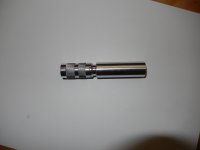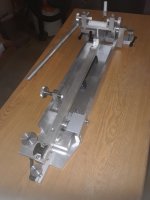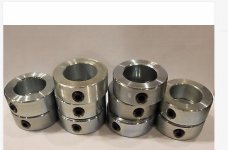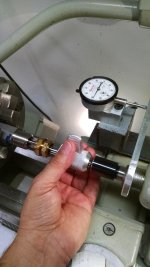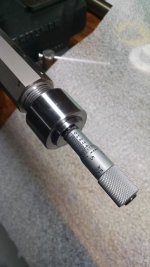Pete Wass
Well-known member
Just curious if anyone besides me uses a stop collar on their reamers? It seemed the logical thing to do, to me so I made one for each of the two reamers I have. Seem to work the very best.
How I arrived at where I set the collar is stuck the reamer in a chamber I wanted to copy, slide the collar on and tighten it with a set screw. So far, both have worked very well.
Pete
How I arrived at where I set the collar is stuck the reamer in a chamber I wanted to copy, slide the collar on and tighten it with a set screw. So far, both have worked very well.
Pete


